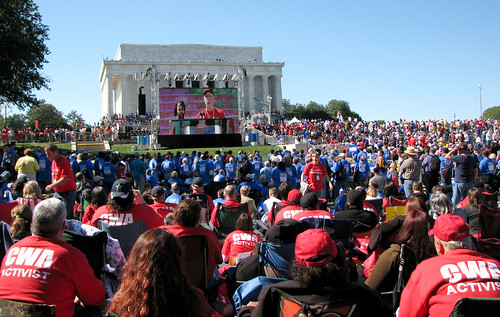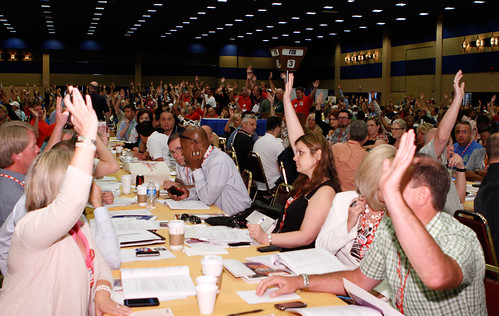Maddening Time
This is a maddening time for anyone concerned about the lives of working-class Americans. The frustration and anger that suffused AFL-CIO President Richard Trumka’s declaration last week that labor would distance itself from the Democratic Party was both clear and widely noted.
Not so widely noted has been a shift in the organizing strategy of two of labor’s leading institutions — Trumka’s AFL-CIO and the Service Employees International Union — that reflects a belief that the American labor movement may be on the verge of extinction and must radically change its game.
It took a multitude of Democratic sins and failures to push Trumka to denounce, if not exactly renounce,the political party that has been labor’s home at least since the New Deal. In a speech at the National Press Club last Friday, Trumka said that Republicans were wielding a “wrecking ball” against the rights and interests of working Americans. But Democrats, he added, were “simply standing aside” as the Republicans moved in for the kill.
The primary source of labor’s frustration has been the consistent inability of the Democrats to strengthen the legislation that once allowed workers to join unions without fear of employer reprisals. American business has poked so many holes in the 1935 National Labor Relations Act that it now affords workers no protections at all.
Beginning with Lyndon Johnson’s presidency, every time the Democrats have held the White House and strong majorities in both houses of Congress, bills that strengthened workers’ rights to unionize have commanded substantial Democratic support — but never quite enough to win a Senate supermajority. And during that time, the unionized share of the private-sector workforce has dwindled from roughly 30 percent to less than 7 percent.
Many union activists viewed the 2009-10 battle for the most recent iteration of labor law reform — the Employee Free Choice Act (EFCA) — as labor’s last stand. EFCA could never attain the magic 60-vote threshhold required to cut off a filibuster, despite the presence, at one point, of 60 Democratic senators.
Given the rate at which private-sector unionization continues to fall (which in turn imperils support for public-sector unions), many of labor’s most thoughtful leaders now consider the Democrats’ inability to enact EFCA a death sentence for the American labor movement. “It’s over,” one of labor’s leading strategists told me this month. Indeed, since last November’s elections, half a dozen high-ranking labor leaders from a range of unions have told me they believe that private-sector unions may all but disappear within the next 10 years.
While some unions still wage more conventional organizing campaigns, the campaign that best captures the desperation of American labor today is that of the SEIU. Perhaps the best-funded and most strategically savvy of American unions, SEIU has embarked on a door-to-door canvass in the minority neighborhoods of 17 major American cities. The goal isn’t to enroll the people behind those doors in a conventional union but, rather, into a mass organization of the unemployed and the underpaid that can turn out votes in 2012 and act as an ongoing pressure group for job creation and worker rights during (presumably) Barack Obama’s second term.
“We realized we could organize one million more people into the union and it wouldn’t in itself really change anything,” SEIU President Mary Kay Henry told me earlier this year. “We needed to do something else — something more.” The SEIU’s program — like its semi-counterpart in the AFL-CIO’s Working America program, a door-to-door canvass in white working-class neighborhoods — will surely help Democratic candidates, despite the frustrations that nearly all labor leaders feel toward the party.
But, like Working America, it signals a strategic shift by American labor, whose ranks have been so reduced that it now must recruit people to a non-union, essentially non-dues-paying organization to amass the political clout that its own diminished ranks can no longer deliver. Since labor law now effectively precludes workplace representation, unions are turning to representing workers anywhere and in any capacity they can. It’s time, they’ve concluded, for the Hail Mary pass.
The unions’ support for the Democrats’ party committees has already diminished considerably, though, as Trumka made clear last week, they will continue to support individual pro-union Democrats. But the greater change in union strategy is the one that’s been forced upon them. They are going outside the workplace. They have no place else to turn.
meyersonh@washpost.com By Harold Meyerson, Published: May 24- 2011 http://www.washingtonpost.com/opinions/labors-hail-mary-pass/2011/05/24/AFHWwiAH_story.html?wpisrc=nl_politics Maddening Time

